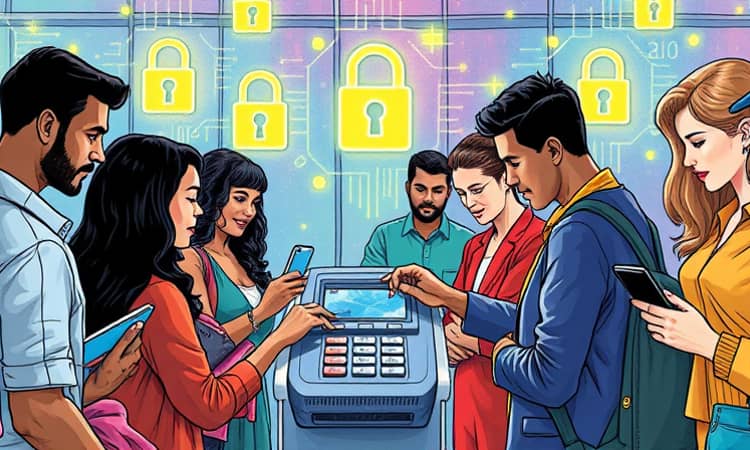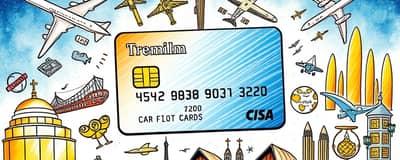In today's fast-paced world, every second counts at the checkout counter. The advent of contactless credit cards has revolutionized how we pay, elevating speed and convenience to new heights.
By simply tapping or waving a card or device near a terminal, consumers can complete transactions almost instantly, making everything from morning coffee purchases to subway rides smoother and more efficient.
With global adoption surging, understanding both the perks and pitfalls of this technology is essential for every cardholder aiming to pay smarter and safer than ever before.
Understanding Contactless Payment Technology
Contactless payment relies on a synergy of Near-Field Communication (NFC) and Radio-Frequency Identification (RFID). These protocols enable devices to communicate at very short ranges, typically under four centimeters, by harnessing electromagnetic fields.
Inside each contactless credit card lies a copper antenna loop connected to a dual-interface EMV chip. When the card nears a terminal, the antenna harvests energy from the reader's radio waves, powering the chip and initiating encryption.
Once activated, the chip generates a unique one-time cryptographic code that stands in for your actual card number during that single transaction, ensuring that intercepted data cannot be reused.
Beyond physical cards, digital wallets on smartphones, smartwatches, and even key fobs use the same principles, embedding secure elements that mimic the behavior of traditional cards while adding biometric checks.
Recent surveys indicate that over 60% of merchants across North America and Europe now support contactless payments, signaling a near-universal shift toward this modern standard.
The Unmatched Speed and Convenience
One of the most celebrated advantages of contactless cards is their remarkable transaction speed. Traditional magnetic stripe swipes or chip inserts can take several seconds longer, especially during busy periods.
With a tap, you enjoy a transaction experience up to ten times faster, drastically cutting queues in cafes, grocery stores, and public transit gates.
Consider a bustling train station at rush hour: contactless turnstiles process fares almost instantly, preventing backup and keeping commuters moving seamlessly.
- Rapid Checkout: Approvals in one to two seconds
- Enhanced Hygiene: No physical contact with readers
- Cross-Platform Support: Cards, phones, wearables, key fobs
- Global Reach: Accepted in over 150 countries
The seamless nature of tapping also reduces user errors; there’s no need to worry about inserting the card incorrectly or dealing with worn-out magnetic stripes.
Robust Security Measures: Behind the Scenes
While speed is the headline benefit, the underlying security architecture of contactless payments is equally sophisticated.
Tokenization stands at the core, as tokenization ensures your card data remains hidden by swapping real numbers for randomized tokens. These tokens are useless if intercepted, thwarting replay attacks.
Complementing tokenization, each tap employs dynamic codes that change with every transaction, ensuring no static information is ever broadcast over the air.
The inherently short reach of NFC—mere centimeters—provides a natural barrier against remote skimming devices. Card issuers layer on advanced fraud detection systems powered by AI and machine learning, monitoring spending habits in real time, flagging anomalies within milliseconds.
- Dynamic Encryption: Fresh code per transaction
- Proximity Limits: Physical closeness required
- AI-Powered Screening: Behavior-based fraud checks
- Issuer Safeguards: Instant authorization protocols
This multi-tiered approach makes unauthorized use and data breaches incredibly challenging for even the most determined adversaries.
Recognizing Potential Vulnerabilities
Despite robust defenses, contactless payments are not without risk. A lost or stolen contactless card can be tapped repeatedly for low-value purchases until the theft is reported.
Skimming incidents, where covert readers capture NFC transmissions in crowded areas, remain a potential threat, although the stolen tokens have limited utility without associated card details.
More sophisticated criminals have explored relay attacks, setting up two devices to capture and extend communication between a legitimate card and terminal—a theoretical risk that, while rare, highlights the arms race between security innovations and hacking tactics.
Understanding these vulnerabilities empowers users to adopt simple precautions and limit potential exposure before it becomes a problem.
Strategies for Safer Contactless Transactions
Mitigating risks begins with heightened awareness and the use of readily available security tools.
Enable real-time transaction alerts via your banking app to catch any unauthorized charges the moment they happen. Pair this with immediate lock or freeze features to halt further taps until you can replace your card.
Consider using a protective sleeve or wallet with RFID-blocking materials to shield cards when they’re not in use. Digital wallets offer additional safeguards, often requiring fingerprint or face recognition before powering up the NFC element.
- Instant Alerts: Monitor charges as they occur
- Card Freezing: Temporary deactivation options
- RFID-Blocking Wallets: Physical signal barriers
- Biometric Locks: Secure digital wallet access
By layering these common-sense measures, you can enjoy frictionless payments with minimal worry.
The Future of Contactless Payments
Looking ahead, the contactless payment ecosystem is poised for further innovation. Integration of biometric features directly into terminals could render PINs obsolete, demanding only a glance or finger press to authenticate large-value transactions securely.
Blockchain and distributed ledger technologies are also under exploration, offering the potential for decentralized, tamper-proof payment records that could further reduce fraud and circumvent single points of failure.
Emerging research into distance bounding to prevent relay attacks shows promise, mathematically verifying the proximity of a card to its reader and neutralizing interception attempts entirely.
As central banks examine digital currencies and offline NFC solutions mature—allowing multiple taps without constant network connectivity—the line between wallet and wearable will blur even more, ushering in an era of true seamless commerce.
Ultimately, continued collaboration among card networks, financial institutions, and technology developers will drive a balance of unwavering security and unmatched convenience.
Contactless credit cards exemplify the convergence of agility and protection in the digital age. By grasping the underlying mechanics, staying vigilant against emerging threats, and embracing practical safeguards, consumers can tap into a payment revolution built for speed and trust.
Empower yourself to pay with confidence—swiftly, smoothly, and securely—and turn every tap into a testament to innovation done right.
References
- https://en.wikipedia.org/wiki/Contactless_payment
- https://www.capitalone.com/learn-grow/privacy-security/contactless-credit-cards/
- https://fortispay.com/info/in-the-media/what-is-a-contactless-credit-card/
- https://usa.visa.com/pay-with-visa/contactless-payments/contactless-payments.html
- https://www.lumafield.com/article/inside-a-contactless-credit-card
- https://www.amu.apus.edu/area-of-study/business-administration-and-management/resources/the-risks-of-contactless-payment-are-high-despite-security/
- https://www.chase.com/personal/credit-cards/education/basics/what-is-a-contactless-credit-card
- https://fnbok.bank/blog/how-secure-are-contactless-payments/














